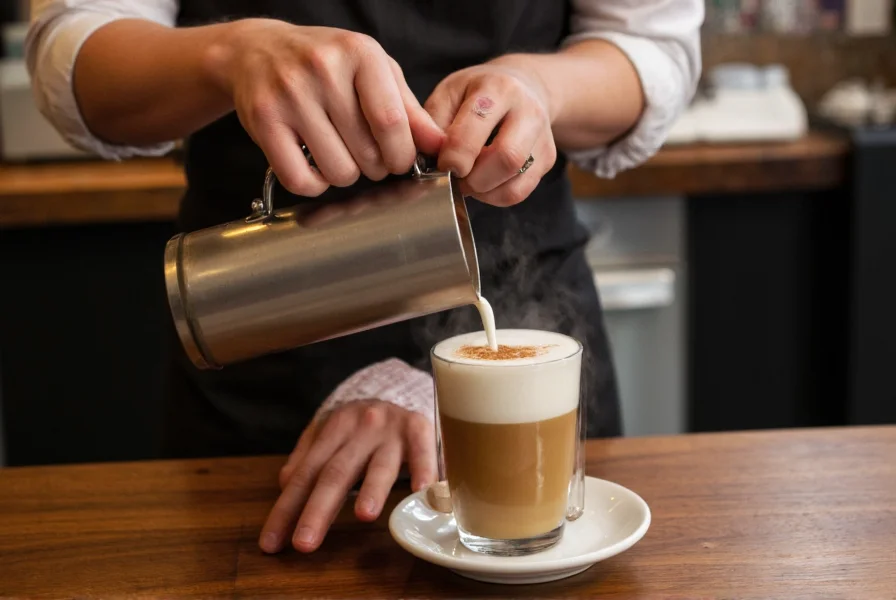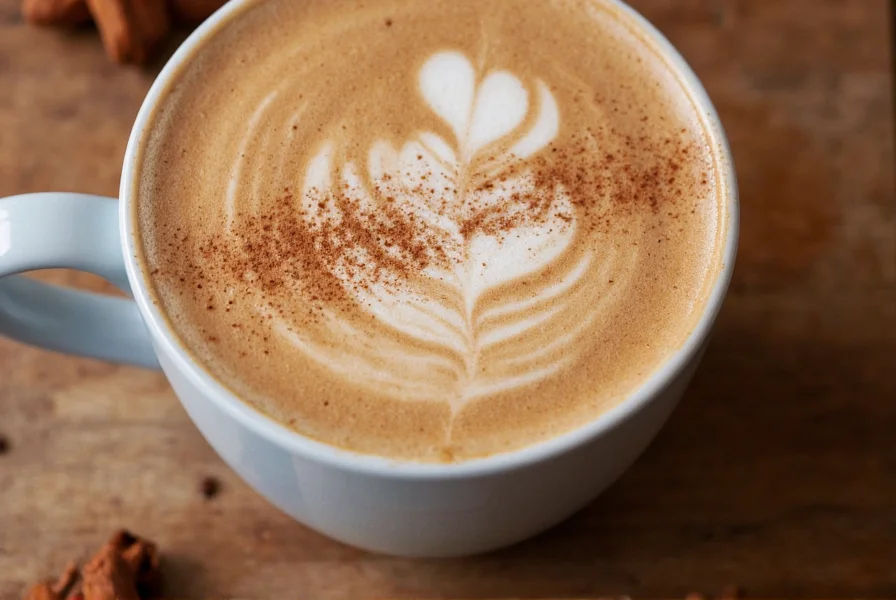A cinnamon latte has become a staple on coffee menus worldwide, offering a perfect balance of coffee intensity and comforting spice. Unlike traditional lattes that focus solely on espresso and milk, this variation incorporates cinnamon as the star flavor component, creating a distinctive taste profile that appeals to both coffee enthusiasts and those who prefer milder coffee experiences.
The Essential Components of a Perfect Cinnamon Latte
Creating an authentic cinnamon latte requires understanding its fundamental elements. The drink consists of three primary components: espresso, milk, and cinnamon flavoring. The quality of each ingredient directly impacts your final beverage.
For the espresso base, use freshly ground coffee beans with a medium-dark roast profile. The milk component works best with whole milk for optimal frothiness, though oat, almond, or soy milk create excellent dairy-free alternatives. When it comes to the cinnamon element, you have multiple preparation options that significantly affect flavor quality.
| Ingredient | Traditional Approach | Specialty Variation |
|---|---|---|
| Espresso | Single or double shot | Ristretto for concentrated flavor |
| Milk | Whole milk steamed | Oat milk with vanilla syrup |
| Cinnamon | Syrup sweetened with sugar | Freshly ground cinnamon infusion |
Traditional vs. Modern Cinnamon Latte Preparation Methods
Understanding the evolution of cinnamon latte preparation helps you choose the method that best suits your taste preferences and equipment availability. Traditional coffeehouses typically use pre-made cinnamon syrup for consistency and speed, while specialty cafes and home baristas increasingly favor fresh preparation methods.
The syrup method involves adding 1-2 tablespoons of cinnamon syrup to your cup before pouring espresso. This approach delivers consistent sweetness and flavor but lacks the nuanced complexity of freshly prepared cinnamon. For a more sophisticated flavor profile, try infusing your milk with freshly grated cinnamon bark during the steaming process.

Step-by-Step Homemade Cinnamon Latte Recipe
Creating a professional-quality cinnamon latte at home requires minimal equipment and ingredients. Follow this detailed process for cafe-quality results:
- Prepare 1-2 shots of fresh espresso using quality coffee beans
- Combine 2 tablespoons of freshly ground cinnamon with 1/4 cup hot water to create a cinnamon infusion
- Steam 8 ounces of your preferred milk to 140-150°F (60-65°C)
- Mix the cinnamon infusion with the espresso in your serving cup
- Gently pour the steamed milk over the espresso mixture
- Finish with a light dusting of freshly grated cinnamon on top
This homemade cinnamon latte preparation method avoids artificial flavors and excessive sugar while delivering a more complex, authentic cinnamon experience. The key to exceptional flavor lies in using freshly ground cinnamon rather than pre-ground spice, which loses its volatile oils and flavor compounds over time.
Seasonal Variations and Customizations
Cinnamon latte enthusiasts often experiment with seasonal variations that enhance the base recipe. During colder months, adding a pinch of nutmeg or clove complements the cinnamon's warmth. For summer enjoyment, try an iced cinnamon latte by pouring the espresso and cinnamon mixture over ice before adding cold milk.
For those seeking dairy-free cinnamon latte alternatives, oat milk provides the creamiest texture while almond milk offers a lighter option. When using plant-based milks, add a touch more cinnamon infusion to compensate for their naturally milder flavor profiles compared to dairy milk.
Common Preparation Mistakes to Avoid
Many home baristas encounter issues when first attempting cinnamon latte preparation. Understanding these common pitfalls ensures better results:
- Using pre-ground cinnamon - Freshly ground cinnamon from whole sticks provides significantly better flavor
- Adding cinnamon directly to espresso - This creates an uneven distribution; infusion methods work better
- Overheating milk - Temperatures above 160°F (71°C) scald milk and diminish sweetness
- Using artificial flavorings - These often create an overwhelming, chemical-like taste
Professional baristas recommend tasting your cinnamon infusion before adding it to espresso. The ideal concentration should have a pronounced cinnamon flavor without bitterness. Adjust the cinnamon-to-water ratio based on your personal preference and the freshness of your cinnamon.
Nutritional Considerations for Cinnamon Latte Enthusiasts
Understanding the nutritional profile helps you enjoy cinnamon lattes as part of a balanced diet. A standard 16-ounce cinnamon latte made with whole milk and two shots of espresso contains approximately 250-300 calories, primarily from the milk's natural sugars and fats.
Cinnamon itself offers potential health benefits, including antioxidant properties and possible blood sugar regulation effects. However, these benefits depend on using real cinnamon rather than artificial flavorings. When preparing homemade cinnamon lattes, you control the sugar content, making it easier to create a beverage that fits your dietary preferences.
Frequently Asked Questions
What's the difference between a cinnamon latte and a regular latte?
A cinnamon latte incorporates cinnamon flavoring into the traditional latte formula of espresso and steamed milk. While a regular latte contains only espresso and milk, a cinnamon latte adds cinnamon syrup or freshly infused cinnamon, creating a distinct sweet-spiced flavor profile that differentiates it from standard lattes.
Can I make a cinnamon latte without an espresso machine?
Yes, you can make a cinnamon latte without an espresso machine. Use strongly brewed coffee or a moka pot for the coffee base. For the cinnamon element, create a simple syrup by simmering equal parts water and sugar with cinnamon sticks for 10-15 minutes. Combine the strong coffee, cinnamon syrup, and heated milk for a satisfying homemade version.
How do I make cinnamon latte without added sugar?
Create a sugar-free cinnamon latte by infusing your milk with freshly grated cinnamon during heating. Simmer milk with cinnamon sticks for 5-7 minutes, then strain. Combine this cinnamon-infused milk with espresso. For additional sweetness without sugar, try adding a small amount of vanilla extract or a natural sweetener like monk fruit extract.
What type of cinnamon works best for lattes?
Ceylon cinnamon (often called "true cinnamon") provides a more delicate, complex flavor ideal for lattes, while Cassia cinnamon offers a stronger, more intense flavor. For latte preparation, freshly ground Ceylon cinnamon sticks create the most nuanced flavor, though Cassia works well if you prefer a more pronounced cinnamon taste. Avoid pre-ground cinnamon as it loses flavor compounds quickly.
How can I make my cinnamon latte foamier?
To achieve foamier texture in your cinnamon latte, use whole milk which creates the most stable microfoam. Heat the milk to 140-150°F (60-65°C) while incorporating air with a steam wand or handheld frother. For dairy-free options, barista-specific oat milk produces the best foam. The key is proper temperature control and incorporating air during the first few seconds of steaming before creating a whirlpool effect.











 浙公网安备
33010002000092号
浙公网安备
33010002000092号 浙B2-20120091-4
浙B2-20120091-4